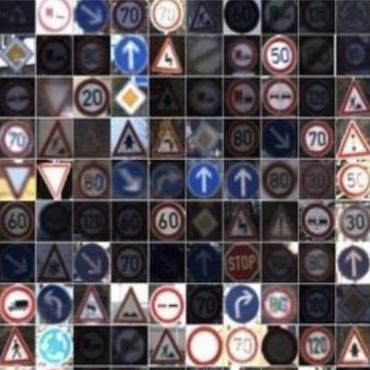Search Results for author: Gang Qu
Found 12 papers, 5 papers with code
Dual-Scale Transformer for Large-Scale Single-Pixel Imaging
1 code implementation • 7 Apr 2024 • Gang Qu, Ping Wang, Xin Yuan
In this paper, we propose a deep unfolding network with hybrid-attention Transformer on Kronecker SPI model, dubbed HATNet, to improve the imaging quality of real SPI cameras.
An Interpretable Cross-Attentive Multi-modal MRI Fusion Framework for Schizophrenia Diagnosis
no code implementations • 29 Mar 2024 • Ziyu Zhou, Anton Orlichenko, Gang Qu, Zening Fu, Vince D Calhoun, Zhengming Ding, Yu-Ping Wang
Both functional and structural magnetic resonance imaging (fMRI and sMRI) are widely used for the diagnosis of mental disorder.
LLM4SecHW: Leveraging Domain Specific Large Language Model for Hardware Debugging
no code implementations • 28 Jan 2024 • Weimin Fu, Kaichen Yang, Raj Gautam Dutta, Xiaolong Guo, Gang Qu
To address these challenges, we propose a unique approach to compile a dataset of open source hardware design defects and their remediation steps, utilizing version control data.
Exploring General Intelligence via Gated Graph Transformer in Functional Connectivity Studies
no code implementations • 18 Jan 2024 • Gang Qu, Anton Orlichenko, Junqi Wang, Gemeng Zhang, Li Xiao, Aiying Zhang, Zhengming Ding, Yu-Ping Wang
Functional connectivity (FC) as derived from fMRI has emerged as a pivotal tool in elucidating the intricacies of various psychiatric disorders and delineating the neural pathways that underpin cognitive and behavioral dynamics inherent to the human brain.
Identifiability in Functional Connectivity May Unintentionally Inflate Prediction Results
1 code implementation • 2 Aug 2023 • Anton Orlichenko, Gang Qu, Kuan-Jui Su, Anqi Liu, Hui Shen, Hong-Wen Deng, Yu-Ping Wang
Using the UK Biobank dataset, we find one can achieve the same level of variance explained with 50 training subjects by exploiting identifiability as with 10, 000 training subjects without double-dipping.
Angle Basis: a Generative Model and Decomposition for Functional Connectivity
1 code implementation • 17 May 2023 • Anton Orlichenko, Gang Qu, Ziyu Zhou, Zhengming Ding, Yu-Ping Wang
We also find that both the decomposition and its residual have approximately equal predictive value, and when combined into an ensemble, exceed the AUC of FC-based prediction by up to 5%.
Latent Similarity Identifies Important Functional Connections for Phenotype Prediction
1 code implementation • 30 Aug 2022 • Anton Orlichenko, Gang Qu, Gemeng Zhang, Binish Patel, Tony W. Wilson, Julia M. Stephen, Vince D. Calhoun, Yu-Ping Wang
Significance: We propose a novel algorithm for small sample, high feature dimension datasets and use it to identify connections in task fMRI data.
Fooling the Eyes of Autonomous Vehicles: Robust Physical Adversarial Examples Against Traffic Sign Recognition Systems
no code implementations • 17 Jan 2022 • Wei Jia, Zhaojun Lu, Haichun Zhang, Zhenglin Liu, Jie Wang, Gang Qu
From the view of object detectors, the traffic sign`s position and quality of the video are continuously changing, rendering the digital AEs ineffective in the physical world.
Don't Forget to Sign the Gradients!
1 code implementation • 5 Mar 2021 • Omid Aramoon, Pin-Yu Chen, Gang Qu
Engineering a top-notch deep learning model is an expensive procedure that involves collecting data, hiring human resources with expertise in machine learning, and providing high computational resources.
Meta Federated Learning
no code implementations • 10 Feb 2021 • Omid Aramoon, Pin-Yu Chen, Gang Qu, Yuan Tian
Due to its distributed methodology alongside its privacy-preserving features, Federated Learning (FL) is vulnerable to training time adversarial attacks.
Ensemble manifold based regularized multi-modal graph convolutional network for cognitive ability prediction
no code implementations • 20 Jan 2021 • Gang Qu, Li Xiao, Wenxing Hu, Kun Zhang, Vince D. Calhoun, Yu-Ping Wang
Methods: To take advantage of complementary information from multi-modal fMRI, we propose an interpretable multi-modal graph convolutional network (MGCN) model, incorporating the fMRI time series and the functional connectivity (FC) between each pair of brain regions.
Distance Correlation Based Brain Functional Connectivity Estimation and Non-Convex Multi-Task Learning for Developmental fMRI Studies
no code implementations • 30 Sep 2020 • Li Xiao, Biao Cai, Gang Qu, Julia M. Stephen, Tony W. Wilson, Vince D. Calhoun, Yu-Ping Wang
Resting-state functional magnetic resonance imaging (rs-fMRI)-derived functional connectivity patterns have been extensively utilized to delineate global functional organization of the human brain in health, development, and neuropsychiatric disorders.








